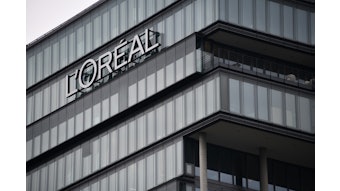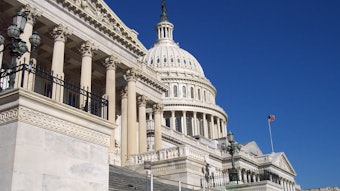
Editor's note: This article explains how cosmetic ingredients are restricted in the EU. It also offers strategies to help global product developers anticipate bans, plan reformulations and stay compliant with evolving regulations.
Log in to view the full article
Editor's note: This article explains how cosmetic ingredients are restricted in the EU. It also offers strategies to help global product developers anticipate bans, plan reformulations and stay compliant with evolving regulations.
Recently, there has been an increase in the number of European Union (EU) ingredient safety reviews. Regulatory professionals are often asked why or when specific ingredients were prohibited, how long existing products containing those ingredients may remain on the market, and which substances might be subject to future restrictions.
Although the effect of regulatory changes on product development is obvious, accurately anticipating bans is not. Understanding the process by which cosmetic ingredients are restricted and prohibited in the EU can help product developers to formulate proactively and ensure ongoing compliance with evolving regulations.
This article outlines the mechanisms by which the EU restricts or prohibits certain ingredients, to give readers outside of the EU – or even within the EU – guidance and strategies to anticipate when reformulation is necessary to stay compliant and avoid disruption of sales.
How Restrictions and Bans Begin
The process to restrict or prohibit a cosmetic ingredient typically begins when new scientific data, safety concerns or external reports such as those from consumer groups, non-governmental organizations, health authorities or scientific literature are brought to the attention of the European Commission or its advisory bodies. Sometimes, the process is initiated by EU Member States, the industry or the commission itself.
Which authority reviews a given ingredient of concern depends largely on the nature of the safety issue and the applicable regulatory framework. If the concern is specific to cosmetic safety such as allergenicity, toxicity or other risks related to typical cosmetic use, the ingredient is most often evaluated by the Scientific Committee on Consumer Safety (SCCS) under the Cosmetics Regulation.
However, if an ingredient could pose broader chemical risks that extend beyond cosmetics, such as being carcinogenic, mutagenic, reprotoxic (CMRs) or potentially endocrine-disrupting, and is also regulated under the EU’s REACH (Registration, Evaluation, Authorization and Restriction of Chemicals) framework, the European Chemicals Agency (ECHA) may become involved. This means the ECHA takes the lead for substances with wider public health or environmental implications, while the SCCS will focus on those specific to consumer safety in cosmetics.
The Phases of SCCS Review
In the context of EU cosmetic regulation, omnibus acts are used by the European Commission to efficiently implement bans and restrictions on numerous cosmetic ingredients all at once. When scientific evaluation or regulatory frameworks – such as the classification of substances as CMRs or newly available safety data necessitates legislative updates – the commission compiles all the needed prohibitions, restrictions or amendments into a single omnibus act.
The SCCS is the main body that evaluates the safety of cosmetic ingredients covered by an omnibus act. It conducts scientific assessments at the request of the industry and is responsible for initiating and coordinating ingredient reviews for regulatory purposes.
Phase 1 — Initial concern raised: Once a concern is raised, an ingredient request dossier may be submitted for a safety assessment by the SCCS.
Phase 2 — Committee review and public consultation: The committee reviews all available toxicological and clinical data, considering aspects such as carcinogenicity, reproductive toxicity, allergenicity and cumulative exposure. The evaluation process is rigorous, relying on the most current scientific methodologies and often inviting public comments or industry data submissions.
Phase 3 — Recommendation: If the SCCS concludes that an ingredient poses unacceptable risks under current use conditions, it recommends one of several regulatory outcomes:
- the substance may be restricted (with stricter limits on allowable concentrations, conditions of use, product types and/or mandatory labelling requirements),
- it may be prohibited entirely, or
- it may be allowed to remain with no change if it is found to be safe.
Phase 4 — Amendment drafted, committee and legal reviews conducted: The European Commission then drafts a proposal to amend the Cosmetics Regulation (EC) No. 1223/2009, which is circulated through a regulatory committee consisting of representatives from all Member States.
A key point is that SCCS only reviews what is requested. If it is only asked to look at the use of an ingredient for the face and this use is allowed and added to Annex III, the product is not approved for use on the body.
Phase 5 — Committee and legal approval, amendment adopted, annex updated: Following committee approval and legal vetting, the amendment is adopted and affected ingredients are added to one of the Cosmetics Regulation’s annexes:
- Annex II (prohibited substances),
- Annex III (restricted substances) or
- the positive lists for colorants, preservatives or UV filters (Annexes IV-VI).
Phase 6 — Official publication, enforcement begins: These changes are published in the Official Journal of the European Union and enter into force either immediately or after a defined transition period during which manufacturers must reformulate or withdraw non-compliant products from the market.
In addition to omnibus acts, amendments can be adopted as stand-alone regulations or delegated acts, particularly when the change concerns a single ingredient or addresses urgent safety concerns. In these cases, the process mirrors that of omnibus updates.
The entire process is transparent and typically involves stakeholder consultation, ensuring that regulatory actions are evidence-based, justified and provide reasonable timelines for industry adaptation. By monitoring emerging risks and scientific developments, the EU continually updates its list of restricted or prohibited substances, safeguarding consumer health and ensuring cosmetic products remain safe for use.
The Phases of ECHA Review
The ECHA is the European Union's regulatory agency responsible for the development, implementation and management of the EU’s chemicals legislation. The ECHA oversees the registration, evaluation, authorization and restriction of chemical substances, primarily under the REACH Regulation, as well as the Classification, Labeling and Packaging (CLP) Regulation; Biocidal Products Regulation; and the regulation on the export and import of hazardous chemicals.
The REACH Regulation is the main EU law designed to protect human health and the environment from risks posed by chemicals. REACH applies to all chemical substances manufactured or imported into the EU in quantities above one metric ton per year. The ECHA manages the required databases, coordinates chemical safety evaluations and provides information to the public and industry. The processes under REACH are as follows:
- Registration: Companies must register detailed information on the properties and uses of their chemicals in a central ECHA database.
- Evaluation: Authorities and the ECHA assess the information to clarify risks, require further testing if needed, or evaluate the substance itself.
- Authorization: Substances of Very High Concern (SVHCs) may require specific authorization to remain in use in the EU.
- Restriction: Some hazardous chemicals can be restricted or banned to reduce risks to people or the environment.
Phase 1 — Initial concerns raised: Like the SCCS review, ECHA reviews are initiated when new chemicals of concern are identified, new scientific data emerges, concerns are raised by stakeholders including Member States, or new evidence of risk prompts reviews. The initiation phase starts the formal review and sets the scope and objectives for the assessment.
Phase 2 — Committee review and public consultation: The second phase is the assessment of the applications or proposed restrictions by the relevant scientific committees within ECHA, such as the Committee for Risk Assessment (RAC) and the Committee for Socio-Economic Analysis (SEAC).
The RAC evaluates proposals for the harmonized classification and labelling of substances, including identifying chemicals as CMRs or as respiratory sensitizers. The committee assesses proposals for restrictions on certain substances, considering whether these restrictions sufficiently protect health and the environment, and provides scientific advice on occupational exposure limits for hazardous chemicals in the workplace, ultimately preparing scientific opinions about the risks chemical substances pose to human health and the environment.
The SEAC is responsible for preparing opinions on the socio-economic impacts of proposed legislative actions on chemicals. This stage often features a public consultation, inviting input and additional data from stakeholders.
Phase 3 — Recommendation and opinion: After thorough analysis, in phase three, the committees formulate formal recommendations or opinions about continued use, restriction or necessary regulatory actions for the chemicals in question. The ECHA publishes proposals for restrictions or classifications and labeling updates.
Phase 4 — Implementation: Following the adoption of a proposed restriction or regulatory action, the fourth phase, implementation, is initiated. This involves establishing compliance deadlines (typically tailored to different product categories) and ensuring that regulated entities progress toward meeting these requirements. If the ECHA’s findings indicate a risk relevant to cosmetics, the data and recommendations are communicated to the European Commission for further action under the Cosmetics Regulation.
Phase 5 — Ongoing monitoring and updating of regulations: Lastly, phase five is the ongoing monitoring and updating of regulations. The ECHA conducts regular updates and reviews as new data becomes available or as new chemicals of concern are recognized. This phase ensures that chemical safety oversight remains responsive to emerging risks.
In rare cases, a CMR ingredient can continue to be used in cosmetics as outlined in Article 15 of the Cosmetics Regulation (EC) No. 1223/2009. In general, all substances classified as CMR Category 1A, 1B or 2 under the CLP Regulation are automatically banned for use in cosmetics.
The continued use of a CMR ingredient is permitted only if all of the following strict conditions are met:
- Compliance with food safety requirements: The substance must meet the safety requirements for food as established in EU legislation.
- No suitable alternatives: There is no suitable alternative substance available.
- Specific use and exposure: The use is for a particular product category with a known exposure.
- SCCS safety evaluation: The SCCS must have evaluated the substance and concluded that it is safe for use in cosmetics for the specific application.
- Approval by the European Commission via a regulation: The exception must be specifically provided for by a European Commission act, after consultation with SCCS.
Outside of these clearly defined, exceptional circumstances, all CMR substances are prohibited in EU cosmetics – and most recent regulatory actions have focused on complete bans.
Examples of Recent and Historical Regulatory Actions
Several recent examples of regulatory actions against given chemicals are worth noting.
Siloxanes: In 2019, Denmark raised environmental and health concerns about certain siloxanes, specifically cyclopentasiloxane (D5). Danish authorities submitted data to the EU related to risks of bioaccumulation and persistence in the environment. This resulted in more stringent restrictions under REACH and reduced permissible use levels in cosmetics. After June 7, 2027, all products that contain D5 at levels above 0.1% are non-compliant and may not be placed on the EU market.
Liliala: Germany’s Federal Institute for Risk Assessment identified Liliala (butylphenyl methylpropional), a common fragrance ingredient, as a reproductive toxicant in 2020. The SCCS opinion also concluded that Lilial posed reproductive toxicity risks and could not be considered safe for use in cosmetic products. As a result, Lilial was classified as a CMR and banned for use in cosmetic products in 2022.
Formaldehyde-releasing ingredients: Belgium launched targeted investigations into formaldehyde-releasing ingredients in 2023. This was prompted by toxicological data and public concern, pushing for lower allowable limits and better labeling.
While formaldehyde is already banned by the EU as an ingredient in cosmetics, formaldehyde-releasing preservatives have not outrightly been banned. Instead, in July 2024, the European Commission adopted much stricter labeling requirements for these substances – any cosmetic product containing formaldehyde-releasers must display the warning “releases formaldehyde” if the total concentration of formaldehyde released exceeds 0.001% (10 ppm), a significant reduction from the prior threshold of 0.05%.
Businesses have until July 31, 2026, to sell through current stock. After this, all products must comply with the new labeling rule. ECHA's scientific committees are expected to issue additional recommendations in 2026.
Aromatic amines: Poland’s toxicology centers began gathering data in 2023 on hair dye (aromatic amines) exposure and adverse reactions. This information is contributing to ongoing SCCS and EU-level risk assessments. The process remains in the data collection and risk evaluation stage as of 2025.
These recent cases illustrate how Member States continue to shape the safety landscape of cosmetics regulation throughout the European Union.
Reformulation Strategy: Anticipating Ingredient Bans
The best way to anticipate ingredient bans or restrictions and stay compliant with regulatory changes in the EU is to monitor the SCCS and ECHA opinions. The average time from initial safety review to the restriction or ban of a cosmetic ingredient typically ranges from one to two years. This period begins with the publication of a safety opinion and ends when a formal regulatory change (such as an update to Annex II or III of the Cosmetics Regulation) enters into force. Once the opinion or classification is published, reformulation should begin.
The new restriction or ban is usually published several months (sometimes up to one year) before it is legally binding, providing a transition period for industry compliance. For example, recent bans such as the prohibition of nanomaterials or certain fragrance allergens have provided between six and 18 months from publication to the market deadline for placing compliant products on the market – followed by an additional period (usually several months to one year) for selling through existing stock.
As ingredient scrutiny continues to intensify in the EU, the ability to anticipate regulatory outcomes is becoming just as critical as responding to them. For companies operating globally, this means monitoring safety reviews, following the scientific opinions that inform regulatory decisions, and building flexibility into product development pipelines.
By understanding how and why restrictions are made — and by planning reformulations proactively — brands can mitigate risks, maintain consumer trust and ensure uninterrupted market access. In today’s regulatory climate, foresight is not just a competitive advantage; it is a necessity.
Footnotes
a Lilial is a trademark of Givaudan SA.










